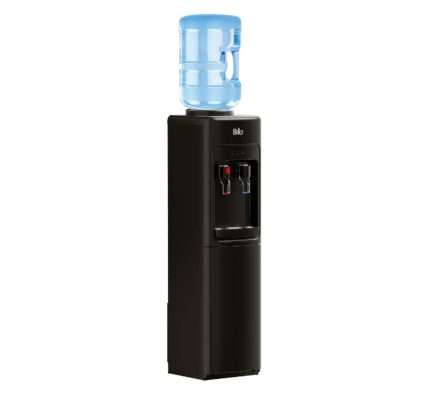Bringing the beauty and vibrancy of nature indoors can be achieved with a selection of the best indoor flowering plants. Not only do they brighten up our living spaces, but they also contribute to a healthier environment by improving air quality and boosting our mood. Choosing the right plants involves considering factors such as light levels, watering needs, and the overall aesthetic you wish to achieve. With careful selection and proper care, you can enjoy a continuous display of blooms throughout the year, transforming your home into a welcoming oasis. The following guide will explore some of the most rewarding and easy-to-care-for options when considering the best indoor flowering plants.
Popular Choices for Indoor Blooms
Numerous indoor flowering plants can thrive in the controlled environment of our homes. Here are a few popular choices known for their beauty and relatively easy care:
- African Violets (Saintpaulia): Known for their velvety leaves and vibrant flowers in shades of purple, pink, and white. They prefer bright, indirect light and consistent moisture.
- Peace Lilies (Spathiphyllum): Elegant plants with glossy green leaves and distinctive white spathes. They are relatively low-maintenance and can tolerate low light conditions.
- Orchids (Orchidaceae): A diverse family of flowering plants known for their exotic beauty and long-lasting blooms. Phalaenopsis orchids are a popular choice for beginners due to their ease of care.
- Amaryllis (Hippeastrum): These bulbs produce spectacular, trumpet-shaped flowers in a range of colors. They are relatively easy to grow and make a stunning statement.
Factors to Consider When Choosing Plants
Before purchasing any indoor flowering plants, consider the following factors:
- Light Levels: Assess the amount of natural light available in your home. Some plants require bright, direct light, while others thrive in lower light conditions.
- Watering Needs: Determine how much time you are willing to dedicate to watering. Some plants require frequent watering, while others prefer to dry out between waterings.
- Humidity: Consider the humidity levels in your home. Some plants prefer higher humidity, which can be achieved with a humidifier or by grouping plants together.
- Maintenance: Evaluate the level of care you are willing to provide. Some plants require more pruning, fertilizing, and repotting than others.
Table Comparison of Plant Characteristics
| Plant Name | Light Requirements | Watering Needs | Maintenance Level |
|---|---|---|---|
| African Violet | Bright, Indirect | Consistent Moisture | Moderate |
| Peace Lily | Low to Medium | Water when soil is dry to the touch | Low |
| Phalaenopsis Orchid | Bright, Indirect | Water sparingly | Moderate |
| Amaryllis | Bright | Water when soil is dry to the touch | Low |
Choosing the correct indoor flowering plants for your home can be a very rewarding experience. Remember to research specific plant needs and provide them with the optimal environment to thrive. With a little care and attention, your indoor garden will flourish with vibrant color and beauty.
Beyond the Usual Suspects: Unearthing Floral Gems
Tired of the same old violets and lilies? Let’s delve into the intriguing world of lesser-known, yet equally captivating, indoor flowering plants. Imagine a constellation of tiny, star-shaped blossoms gracing your windowsill – that’s the charm of the Star Jasmine (Trachelospermum jasminoides), though technically a vine, it happily adapts to pot life, filling your home with an intoxicating fragrance reminiscent of summer nights. Or perhaps you crave a touch of the exotic? Consider the Clivia (Clivia miniata), a South African native boasting vibrant orange or yellow trumpet-shaped flowers atop lush, strap-like leaves. Its bold presence commands attention, bringing a touch of the savanna indoors. These are just a few examples of unique floral treasures waiting to be discovered.
The Art of Floral Alchemy: Tailoring Your Environment
Growing indoor flowering plants isn’t just about watering and sunlight; it’s about creating a microclimate, a haven where your botanical companions can truly flourish. Think of yourself as a floral alchemist, experimenting with elements to unlock their full potential. Boost humidity by placing plants on pebble trays filled with water, creating a miniature rainforest atmosphere. Rotate your plants regularly to ensure even light exposure, preventing them from stretching towards the sun like eager students straining to hear the teacher. And don’t underestimate the power of conversation! Studies have shown that talking to your plants can actually encourage growth. Perhaps they thrive on the carbon dioxide we exhale, or maybe it’s simply the positive energy we radiate. Whatever the reason, a little verbal encouragement can go a long way. The journey to finding the perfect indoor flowering plants is an adventure.
The Future of Indoor Gardens: Edible Blooms and Vertical Visions
The world of indoor gardening is constantly evolving, pushing the boundaries of what’s possible within our four walls. Imagine a future where your indoor garden not only delights the eyes but also nourishes the body. Edible flowers like Nasturtiums (Tropaeolum) with their peppery tang, or Viola (Viola odorata) with their delicate sweetness, can add a gourmet touch to salads and desserts. Furthermore, vertical gardening is revolutionizing the way we approach indoor greenery, transforming blank walls into living tapestries of color and texture. Consider mounting a series of small pots or using a vertical planter to create a cascading display of flowering vines like Trailing Begonias (Begonia pendula), adding a touch of drama and sophistication to any space. With innovative techniques and a dash of creativity, your indoor garden can become a source of both beauty and sustenance. The most beautiful indoor flowering plants are those that speak to you.

